A stereo/TRS (short for tip/ring/sleeve) ¼-inch plug looks like a stereo headphone plug (take a look at Figure 3-2). The tip is the end of the plug, the ring is the small middle section located between the two plastic dividers, and the sleeve is the rest of the metal part of the plug. A TRS plug can be used for the following three types of cords:
Stereo cord: A stereo cord is used for signals that contain two separate portions: one for the right channel and the other for the left channel. This type of cord is generally wired with the left-channel signal attached to the tip, the right-channel signal connected to the ring, and the shield wired to the sleeve. This type of cord is typically used for headphones. FIGURE 3-2:Use a balanced (TRS) plug to connect professional audio gear.
Balanced cord: A balanced cord is used on professional audio gear to join the various pieces of equipment (to connect the mixer to the recorder, for example). The advantage with a balanced cord is that you can have longer cord runs without creating noise. Why are balanced cords so conveniently noise free? The balanced cord has two wires and a shield inside and has the same signal running through both wires. One signal is 180 degrees out of phase with the other (that is, their waveforms are opposite one another), and when the signals get to the mixer (or whatever they’re plugged into) one of the signals is flipped and added to the other. When this happens, any noise that built up in the signal is canceled out.
Y cord: A Y cord consists of a TRS plug on one end and two TS plugs on the other, forming — you guessed it — a nice representation of the letter Y. This cord allows you to insert an effect processor — a compressor or equalizer, for example — in the line of a mixer (more specifically, into the insert jack of the mixer). Check out Chapter 4for details on mixers. The TRS plug both sends and receives a signal. This cord is wired so that the tip sends the signal and the ring receives it (see Figure 3-3). The sleeve is connected to the shield of each cable.
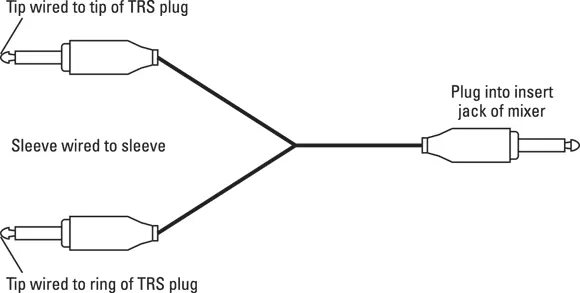
FIGURE 3-3:Use a Y cord to send and receive a signal.
The XLR connector is used for microphones and some line connections between professional gear. This cable has a female and a male end (see Figure 3-4). The cord is wired much like a TRS connector and is balanced to minimize noise. The XLR microphone cable is also called a low Z cable because it carries a low-impedance signal.
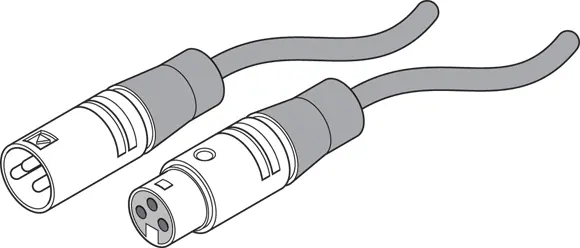
FIGURE 3-4:An XLR connector: One end is male (left) and the other is female (right).
RCA plugs — named for good old RCA and also called phono plugs — are common on home stereos and on some semipro audio gear (see Figure 3-5). They function much like a TS plug but aren’t very common in professional audio equipment. However, you find them on some mixers so that you can connect a CD player, turntable, iPod, or other media device. They’re also used for digital S/PDIF signals (see the next section for more details on these babies).
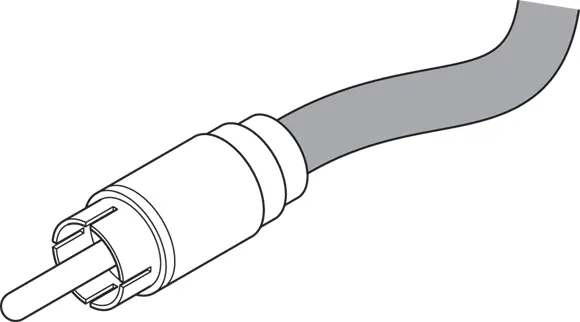
FIGURE 3-5:An RCA plug is used mainly on consumer stereo and some semipro audio equipment.
Delving into Digital Connections
If you’re going to record using a digital recorder or mixer, you’re going to run into digital connectors (plugs and cables/cords). Digital audio equipment is a recent invention, and as such, no one standard has emerged. Because of this lack of standardization, a variety of digital connection methods are on the market, only a few (or one) of which may be on the equipment that you own or intend to purchase. Regardless, knowing about the most common types of connectors and their purposes can help you decide what equipment is right for you.
MIDI, short for Musical Instrument Digital Interface, is a handy communication protocol that allows musical information to pass from one device to another. To allow the free passage of such information, MIDI jacks are located on a whole host of electronic instruments. Synthesizers, drum machines, sound modules, and even some guitars have MIDI jacks. And, to connect all these instruments, you need some MIDI cables. The MIDI connector contains five pins (male) that plug into the female MIDI jack (port) on the instrument or device (see Figure 3-6).

FIGURE 3-6:MIDI connectors have two male ends. The device contains the female jack.
AES/EBU (Audio Engineering Society/European Broadcasting Union) cables are much like S/PDIF cables (described in the next section). The AES/EBU standards require these cables to transmit two channels of data at a time. They differ from S/PDIF cables in that they consist of XLR plugs and use balanced cables. (Figure 3-7 shows what the inputs look like on the recording equipment.) AES/EBU was developed to be used with professional audio components (hence, the use of balanced cords — the kinds used in professional-level equipment).
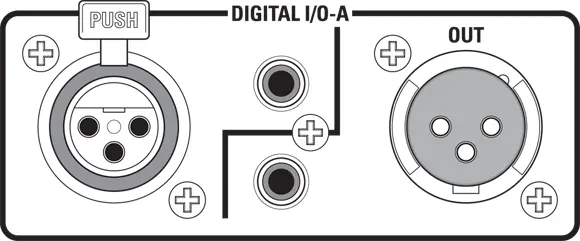
FIGURE 3-7:S/PDIF and AES/EBU connectors look the same as analog RCA (S/PDIF) and XLR (AES/EBU) but are marked as digital on the machine.
S/PDIF (short for Sony/Phillips Digital Interface Format) cables consist of an unbalanced coaxial cable (one wire and a shield) and RCA plugs. (Figure 3-7 shows what the inputs look like on the machine.) These cables can also be made from fiber-optic cable and a Toslink connector. The S/PDIF format can transmit two channels of digital data at one time. S/PDIF protocols are similar to AES/EBU standards, except that S/PDIF was originally designed for the consumer market — which explains why unbalanced cords are used. In spite of being developed for the consumer market, S/PDIF connectors are found on a lot of pro recording gear along with (or instead of) AES/EBU.
 If you want to use cords that are longer than 3 to 4 feet when using an S/PDIF connector — or about 15 feet for AES/EBU connectors — your best bet is to use video or digital audio cables. Regular audio cables degrade the sound at longer distances because they can’t transmit the type of signal that digital produces without affecting the quality of the sound. If you use audio cables for longer distances, you lose some of the sound’s definition. Some people describe this sound as “grainy.”
If you want to use cords that are longer than 3 to 4 feet when using an S/PDIF connector — or about 15 feet for AES/EBU connectors — your best bet is to use video or digital audio cables. Regular audio cables degrade the sound at longer distances because they can’t transmit the type of signal that digital produces without affecting the quality of the sound. If you use audio cables for longer distances, you lose some of the sound’s definition. Some people describe this sound as “grainy.”
The ADAT (Alesis Digital Audio Tape) Lightpipe format allows eight tracks of digital audio to be sent at once. Developed by Alesis, ADAT Lightpipe (or simply Lightpipe for short) has become a standard among digital audio products. It consists of a fiber-optic cable that uses a special connector developed by Alesis.
Читать дальше
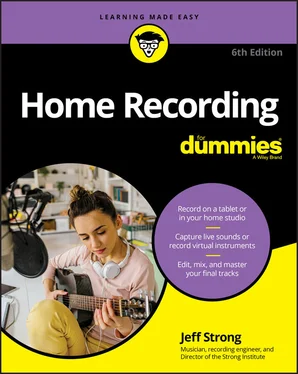





 If you want to use cords that are longer than 3 to 4 feet when using an S/PDIF connector — or about 15 feet for AES/EBU connectors — your best bet is to use video or digital audio cables. Regular audio cables degrade the sound at longer distances because they can’t transmit the type of signal that digital produces without affecting the quality of the sound. If you use audio cables for longer distances, you lose some of the sound’s definition. Some people describe this sound as “grainy.”
If you want to use cords that are longer than 3 to 4 feet when using an S/PDIF connector — or about 15 feet for AES/EBU connectors — your best bet is to use video or digital audio cables. Regular audio cables degrade the sound at longer distances because they can’t transmit the type of signal that digital produces without affecting the quality of the sound. If you use audio cables for longer distances, you lose some of the sound’s definition. Some people describe this sound as “grainy.”










